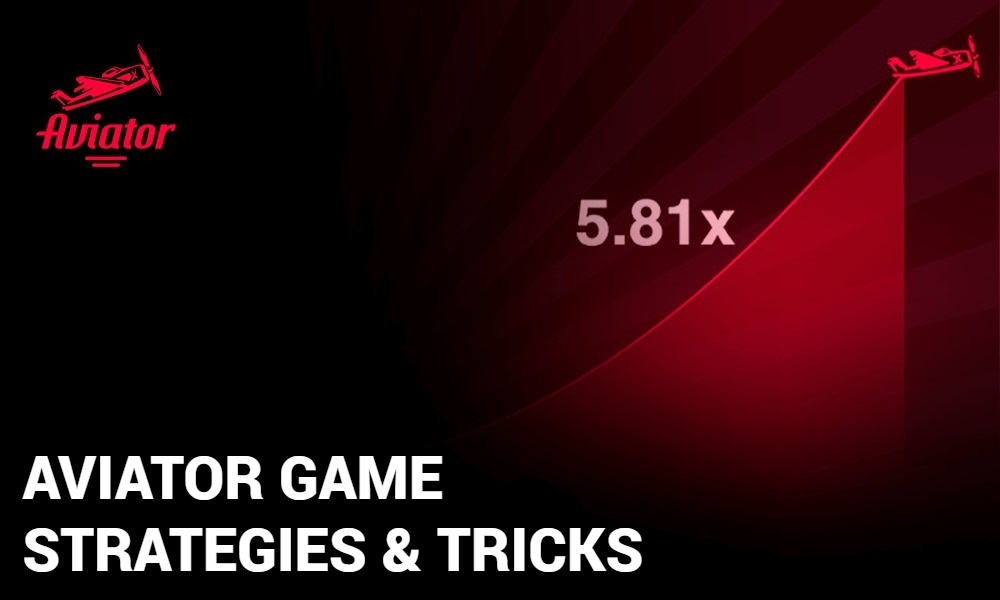
Winning is always good, but big wins are even better. And in the crash game Aviator, they can be obtained in a matter of seconds, especially if you find the right game strategy for yourself. Find out how to win more money in the game Aviator and increase your chances of success.
Single bet strategies
Playing with a single bet is preferable for beginners. This strategy in Aviator money game will help the player stay focused and have better control over the entire process. To play with a single bet, you only need to determine your bankroll and choose one of the tactics described in this article that suits your experience and risk level.

Low risk tactic
The low risk tactic is based on playing it safe, which may not result in quick high winnings but allows minimizing losses and staying in the positive. The essence of this method is to cash out when the plane reaches multipliers of x1.2 to x1.5.
This strategy for playing Aviator is suitable for beginners, conservative players, and gamblers with a small bankroll.
For convenience, you can enable the “Auto Cashout” option, which allows you to set a multiplier at which your winnings will be automatically cashed out.
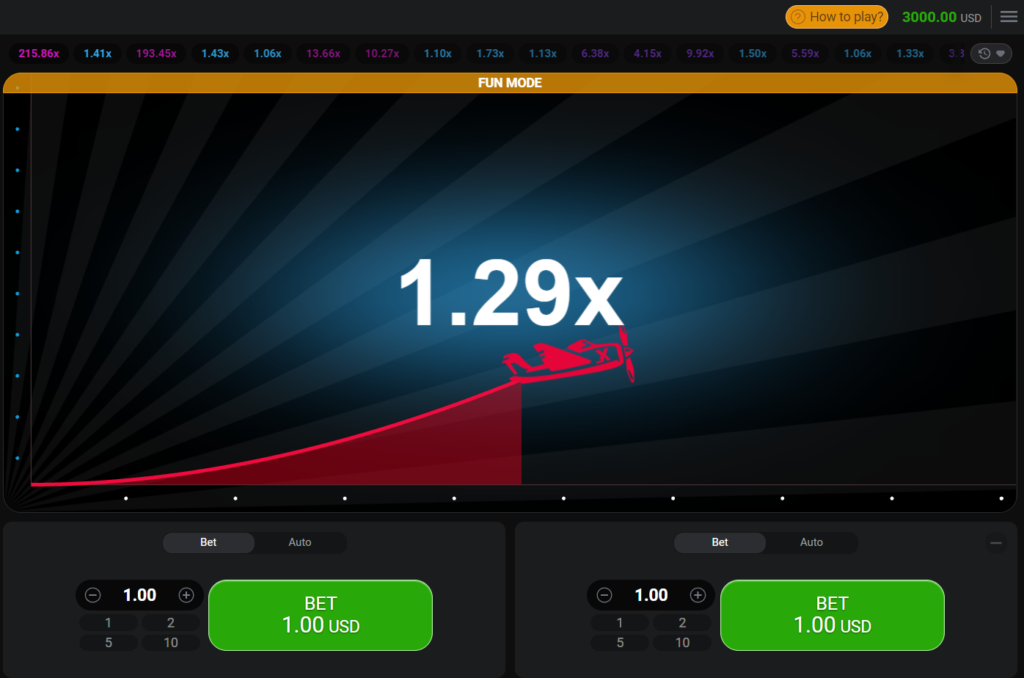
Moderate risk tactic
The moderate risk tactic is suitable for players with a substantial budget. With this betting scheme, the game is played with multipliers of x2 to x3, with a probability of approximately 40-50% of achieving them. We recommend using this strategy for Aviator to gamblers who already have a good understanding of the mechanics of the game and can predict the dynamics of the multipliers.

High risk tactic
The high-risk tactic involves keeping the bet in the hope of catching the highest possible multipliers. The risks are extremely high, so stable winnings should not be expected. However, there is a possibility of winning a large sum. The idea is to hit the x100 and higher multipliers, which usually occur on average once or twice per hour. This high-risk tactic in Aviator is suitable only for experienced players with a large betting budget.

Two simultaneous bets
In the game “Aviator” it is possible to make two independent bets at the same time. The two-bets game allows you to expand the player’s options and combine strategies.
For example, if you are bored of getting small wins while sticking to a minimal risk strategy, but you are still afraid to take risks, place two bets on x1.2-1.5 multipliers and turn on Auto Cash Out. Thus, you can accelerate the receipt of a larger amount of money.
Or try a combination of low-risk and moderate-risk tactics. Make one bet on the x1.2 multiplier and the second on x2-3. In the event that a higher rate does not go in, the lower one will beat off part of the loss.
The most risky gamblers who hope to hit a really big jackpot can place one bet on x100+ odds and the second on multipliers from x1.2 to 3.

The best betting schemes in the game “Aviator”
There are popular, already known to many, mathematical betting schemes for most online casino games, such as the Martingale, Labouchere, Fibonacci and D’Alembert strategies. Let’s consider how these betting schemes can be applied in the Aviator game.

Martingale strategy
The strategy of playing Aviator Martingale is to increase the bet by 2 times after each loss.
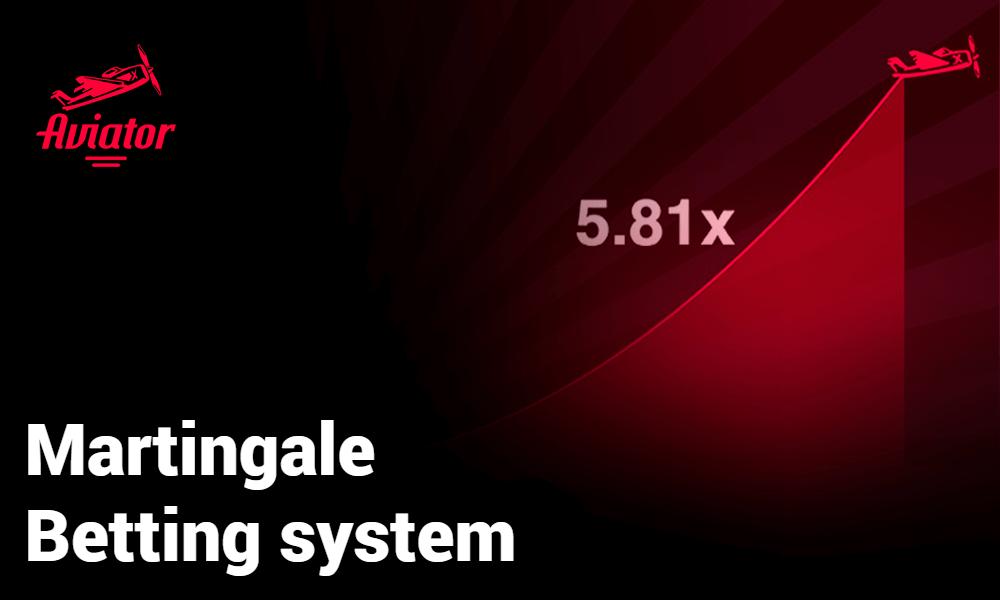
Example: the user bet $2 and lost. The next time he bets $4, if he loses again, he bets $8, and so on. Getting a win in the end will help offset the losses.
Important! To use this strategy, you need to take the winnings on the x2 multiplier so that the probability of winning is at least 50% (as when playing roulette, betting on red and black), you also need to determine the bankroll. We recommend that with initial bets of $1, enter the game with a bank of $100 or more.
Do not forget that the maximum bet amount is $100. If you start the game with a bet of $20, then in case of failure, you can double subsequent bets only 2 times!
An example of the correct game of Aviator using the “Martingale” strategy:
- We go into the game Aviator with a balance of $ 100 on the account;
- We start the game with a bet of $1;
- We cash out money when the coefficient reaches the x2 multiplier;
- If the plane hasn’t reached the multiplier, we increase the bet from $1 to $2, if the second bet doesn’t win, we put $4, and so on.
- If you win, we return to the initial bet of $1.
Table with an example of 15 bets:
| № | Coefficient | Bet | Exodus | Bank (initial $100) |
| 1 | х2 | 1$ | ✔️ | 101$ |
| 2 | х2 | 1$ | ❌ | 100$ |
| 3 | х2 | 2$ | ✔️ | 102$ |
| 4 | х2 | 1$ | ❌ | 101$ |
| 5 | х2 | 2$ | ❌ | 99$ |
| 6 | х2 | 4$ | ✔️ | 103$ |
| 7 | х2 | 1$ | ✔️ | 104$ |
| 8 | х2 | 1$ | ❌ | 103$ |
| 9 | х2 | 2$ | ✔️ | 105$ |
| 10 | х2 | 1$ | ✔️ | 106$ |
| 11 | х2 | 1$ | ✔️ | 107$ |
| 12 | х2 | 1$ | ❌ | 106$ |
| 13 | х2 | 2$ | ✔️ | 108$ |
| 14 | х2 | 1$ | ❌ | 107$ |
| 15 | х2 | 2$ | ✔️ | 109$ |
Reverse Martingale Strategy (Anti-Martingale)
The tactics of the game “Anti-Martingale” is opposite to the classic “Martingale” strategy: after a win, the bet increases, after a loss it returns to the original one.
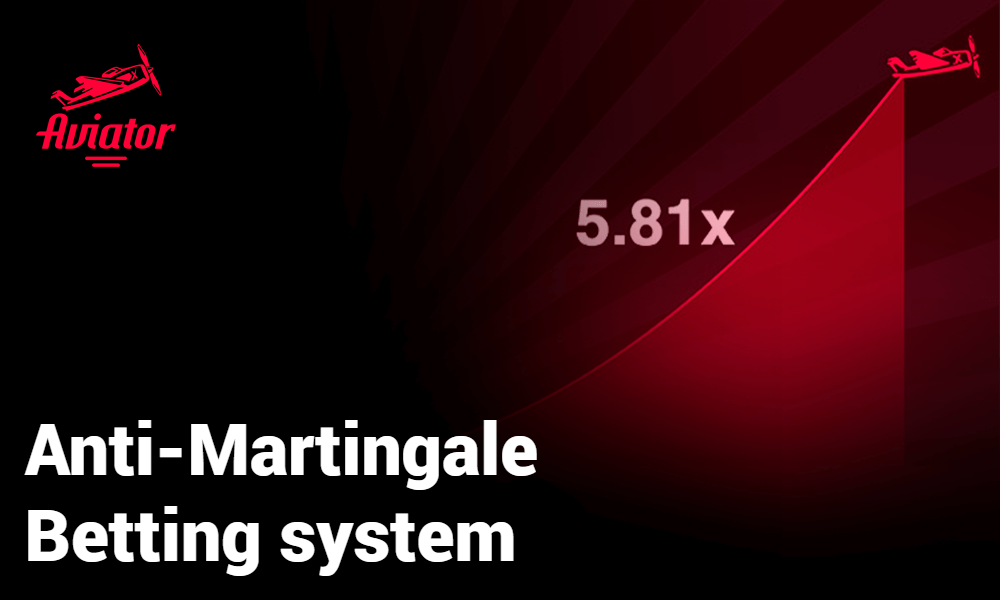
The “Anti-Martingale” strategy allows you to win a good amount of money during successful episodes and reduce losses during a series of failures. Using this tactic, the user requires strict adherence to the rules and self-discipline.
Important! Using this strategy, you need to play with a x2 multiplier, as well as set a ceiling for winning streaks, and then return to the minimum bet. As a rule, this is a series of three victories.
Some players set a ceiling for themselves in a winning streak of 4-5 bets. But it is important to understand that with each subsequent victory, the percentage of the probability of losing becomes greater!
An example of the correct game of Aviator using the “Anti-Martingale” strategy:
- We go into the game Aviator with a balance of $ 100 on the account;
- We start the game with a bet of $1 (1% of the bankroll);
- We cash out money when the coefficient reaches the x2 multiplier;
- If the bet is won, we increase it by 2 times (bet $2), if we win again, we bet $4, if we win again, we take the jackpot;
- After a series of three victories, we start the game again with $1;
- In case of any defeat, we start the game with $1.
Table with an example of 15 bets:
| № | Coefficient | Bet | Exodus | Bank (initial $100) |
| 1 | х2 | 1$ | ❌ | 99$ |
| 2 | х2 | 1$ | ✔️ | 100$ |
| 3 | х2 | 2$ | ✔️ | 102$ |
| 4 | х2 | 4$ | ❌ | 98$ |
| 5 | х2 | 1$ | ✔️ | 99$ |
| 6 | х2 | 2$ | ✔️ | 101$ |
| 7 | х2 | 4$ | ✔️ | 105$ |
| 8 | х2 | 1$ | ❌ | 104$ |
| 9 | х2 | 1$ | ✔️ | 105$ |
| 10 | х2 | 1$ | ❌ | 103$ |
| 11 | х2 | 1$ | ✔️ | 104$ |
| 12 | х2 | 2$ | ✔️ | 106$ |
| 13 | х2 | 4$ | ✔️ | 110$ |
| 14 | х2 | 1$ | ❌ | 109$ |
| 15 | х2 | 1$ | ✔️ | 110$ |
Fibonacci strategy
The strategy of playing Aviator for money “Fibonacci” is based on the use of one of the oldest mathematical sequences – the Fibonacci series (1, 1, 2, 3, 5, 8, 13, 21, 34, 55).
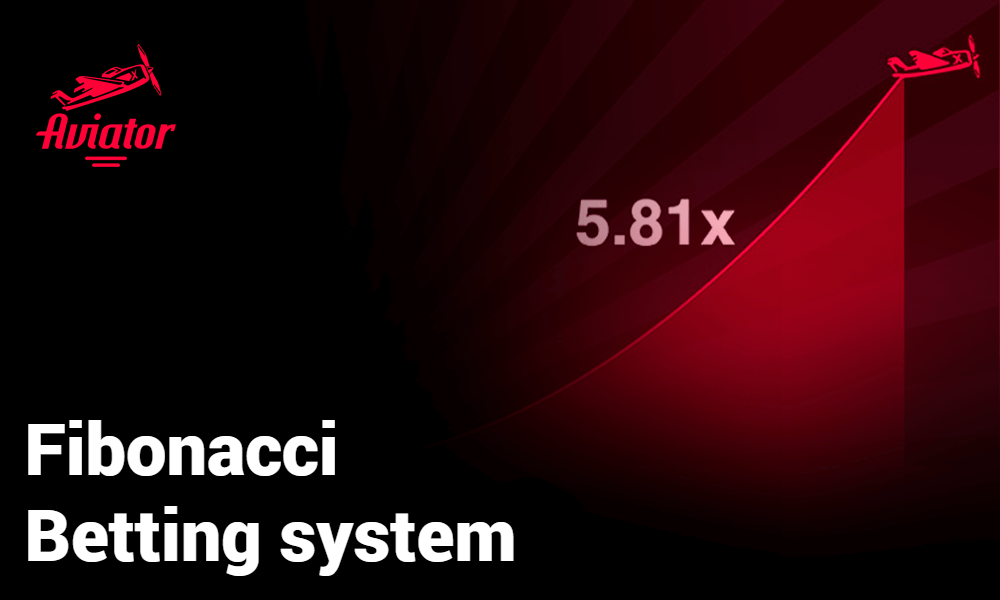
How it works: determine the bankroll, enter the game and play with a withdrawal on the x2 multiplier. In case of bad luck, take a step forward and increase the bet in accordance with the number series (1, 1, 2, 3, 5, 8, 13, 21, 34, 55). If you win, go back two steps in the sequence.
Consider an example of a game with an initial pot of $100 and a bet of $1.
Table with an example of 15 bets:
| № | Coefficient | Bet | Exodus | Bank (initial $100) |
| 1 | х2 | 1$ | ❌ | 99$ |
| 2 | х2 | 1$ | ✔️ | 100$ |
| 3 | х2 | 1$ | ❌ | 99$ |
| 4 | х2 | 1$ | ✔️ | 100$ |
| 5 | х2 | 1$ | ✔️ | 101$ |
| 6 | х2 | 1$ | ❌ | 100$ |
| 7 | х2 | 1$ | ❌ | 99$ |
| 8 | х2 | 2$ | ❌ | 97$ |
| 9 | х2 | 3$ | ❌ | 94$ |
| 10 | х2 | 5$ | ❌ | 89$ |
| 11 | х2 | 8$ | ✔️ | 97$ |
| 12 | х2 | 3$ | ✔️ | 100$ |
| 13 | х2 | 1$ | ✔️ | 101$ |
| 14 | х2 | 1$ | ✔️ | 102$ |
| 15 | х2 | 1$ | ✔️ | 103$ |
D’Alembert’s strategy
The essence of the classic d’Alembert strategy implies that the player increases the bet by a conventional unit in case of a loss, and after winning, reduces it by the same conventional unit.
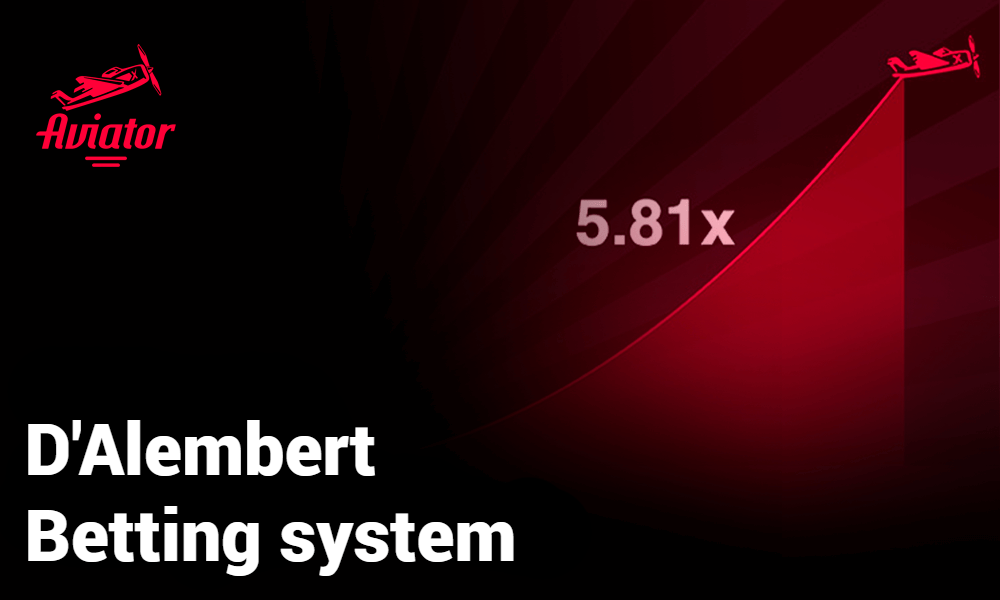
The method is based on the idea that about 50% of the time the number of wins and losses is the same. Therefore, we will again consider playing Aviator using this strategy on a x2 multiplier.
First you need to decide on the initial rate. If we have $100 in our account, we can divide this amount by 30. As a result, our initial bet will be $3.3. To make it more convenient to count and play, we will round up to $3.
How to play this tactic in Aviator:
- We make the initial unit of the bet (in our case, $3);
- We play on the coefficient x2;
- If the bet has played, with the initial bet of $3, we bet $3 again;
- In case of a lost game, we raise the bet by one unit (3+3=6$). If you lose again, then increase again (3+3+3=$9);
- In case we won the game after a losing streak, we bet $3 less than the last one (9-3=$6) and so on.
| № | Coefficient | Bet | Exodus | Bank (initial $100) |
| 1 | х2 | 3$ | ❌ | 97$ |
| 2 | х2 | 6$ | ✔️ | 103$ |
| 3 | х2 | 3$ | ❌ | 100$ |
| 4 | х2 | 6$ | ✔️ | 106$ |
| 5 | х2 | 3$ | ✔️ | 109$ |
| 6 | х2 | 3$ | ✔️ | 112$ |
| 7 | х2 | 3$ | ❌ | 109$ |
| 8 | х2 | 6$ | ❌ | 97$ |
| 9 | х2 | 9$ | ❌ | 88$ |
| 10 | х2 | 12$ | ✔️ | 100$ |
| 11 | х2 | 9$ | ✔️ | 109$ |
| 12 | х2 | 6$ | ✔️ | 115$ |
| 13 | х2 | 3$ | ❌ | 112$ |
| 14 | х2 | 6$ | ✔️ | 118$ |
| 15 | х2 | 3$ | ✔️ | 121$ |
Labouchere strategy
The strategy of playing Aviator “Labouchere” is based on the fact that on average the number of wins and losses is the same (playing at x2 odds), and there is an opportunity to win in the long-term game.
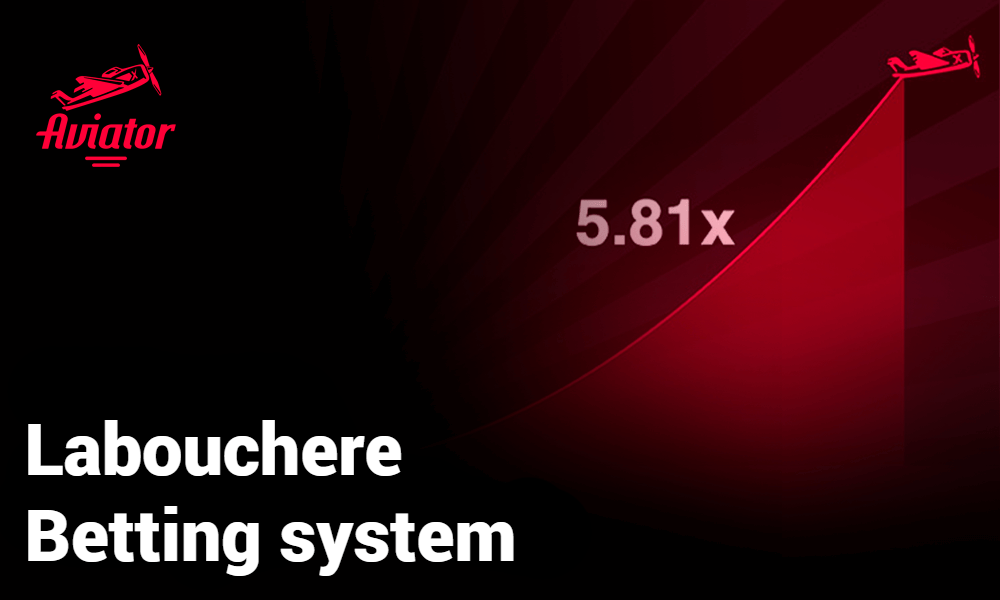
To use this tactic, you first need to decide on the size of the desired reward. Let’s say it’s $10 (the amount should be no more than 10% of the bank). After that, it is necessary to divide this sum into 5 parts (one of the parts should not exceed the other by more than three times), for example: the sequence of the sum of numbers 1-2-3-3-1. The size of the first bet will be the sum of the first and last number (1+1=2$). If you bet this amount and win, then these numbers are removed from the sequence (1-2-3-3-1). In case of loss, you just need to add the number 2 at the end of the row (the number equal to the sum of the first and last digit), without removing the first and last number (1-2-3-3-1-̲2̲), and then calculate the bet in the same way.
An example of the correct game of Aviator using the “Labouchere” strategy (bank =100$ / desired winnings 10$ / Number series 1-2-3-3-1):
- Bet 2$ (1$+1$ first and last number) – Loss / Bank = 98$. Row 1-2-3-3-1-2;
- Bet 3$ (1$+2$) – Win / Bank = 101$. Row 2-3-3-1;
- Bet 3$ (2$+1$) – Loss / Bank = 98$. Row 2-3-3-1-3;
- Bet 5$ (2$+3$) – Win / Bank = 103$. Row 3-3-1;
- Bet 4$ (3$+1$) – Loss / Bank = 99$. Row 3-3-1-4;
- Bet 7$ (3$+4$) – Win / Bank = 106$. Row 3-1;
- Bet 4$ (3$+1$) – Win /Bank = 110$.
Result: Bank = $110
Tips for inexperienced players
- Decide on a bankroll. A bankroll is the amount of money that you can spend on a gaming session. Based on this, you can choose the optimal strategy and determine the possible number of bets. It is important to control your expenses and allocate for the game the amount that you do not mind losing in case of failure.
- Don’t take risks, make the right bets. Try to stick to the chosen strategies. Don’t lose your head, mindlessly trying to win back and betting big to get a profit.
- Keep volatility low. In order not to lose often, try to calculate the probability of when the plane will disappear and cash out at low odds.
- Study the statistics of other players. See what other users have achieved, share experiences with each other. This will help you better understand the gameplay and determine the best strategy for yourself. In the game, you can see the statistics of past multipliers, as well as statistics of bets in real time.
- Test the selected strategy in the Aviator demo mode. This way you will get an idea of how it works without spending real money. We recommend testing several tactics in demo mode and assessing the risks of each of them. All this will increase the chances of success when playing for real money and will allow you to reach a positive balance.
- Limit game time. Try to play no more than an hour and take breaks to rest and bet with a clear mind. Otherwise, you can succumb to excitement and deviate from the chosen strategy.
- Remember that Aviator is a game of chance. A lot depends on luck here, so be prepared for the fact that the winnings will not always be.
